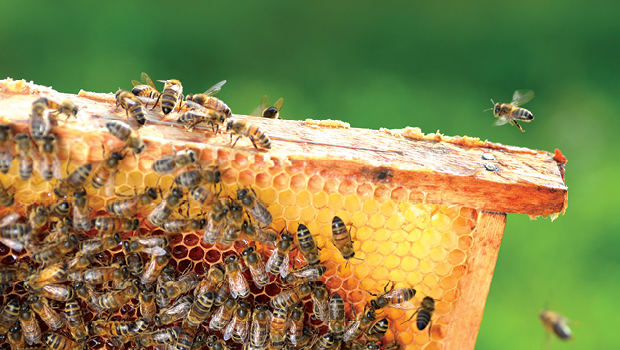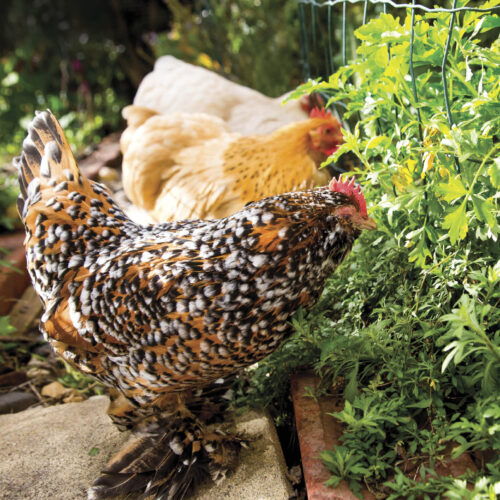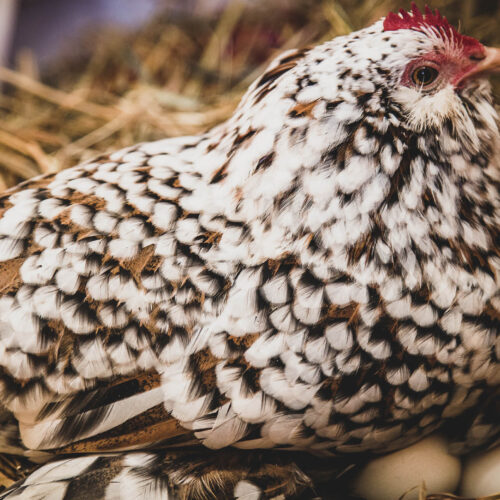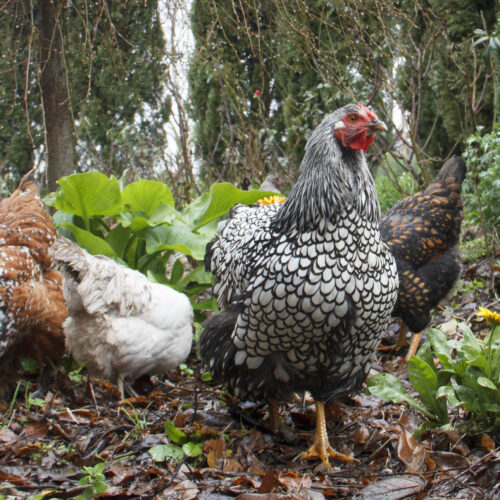All abuzz
2017-04-26T05:20:45+10:00
Kirsten Bradley shares her sweet secrets of success for keeping bees.
Beekeeping is a great way to get a better understanding of the natural world around you, plus it offers the benefits of increased pollination and sweet home-produced honey. It can also be a fascinating and lifelong partnership between you and a honeybee colony, writes Kirsten Bradley.
We have been evolving side by side with honeybees for as long as we’ve been human – first as honey hunters and then, slowly, as beekeepers. The fact that our ancestors became keepers of bees should come as no surprise. After all, it’s hard to transcend the sweet energy density of honey, the ‘magical’ properties of mead and the proteins of pollen.
Each continent on Earth has a host of different native bees – some social (living in colonies) and some solitary – and each species is suited to its home biosphere and, with that, the nectar and pollen wealth of the region.
For the purposes of this article, we’ll focus primarily on Apis mellifera – the honeybee found throughout Europe, Africa and the Middle East. It’s the one you’ll find in most beekeepers’ hives in Australia, with the small exception of sugarbag bees (Tetragonula), which are a social, stingless, native Australian bee kept primarily for their pollination services and for nature observation and conservation rather than the tiny amount of honey their hives produce.
In recent years there have been terrible losses to honeybee populations around the world, but the good news is we can all help alleviate this problem by becoming natural beekeepers. Natural beekeeping focuses on being sensitive to what honeybees need to thrive by providing a healthy, low-stress environment.
In a good year a healthy colony of bees will have honey to spare and, perhaps more importantly, natural beekeeping gives us an insight to how we can change our farming, gardening and living practices to create a world where bees flourish.
Getting Started
Getting started in beekeeping requires some upfront costs, including time spent researching and learning. But the long-term benefits are many.
For example, to get started with a pre-made Warré hive (a vertical, tiered structure), bees and all the kit you’ll need will cost about $600–$800. The time you will need to spend will be about 10 minutes a week (observing bee behaviour at the entrance) and two to three hive openings a year, which take about 15 minutes plus the setup and pack down.
The benefit with Warré beekeeping is that most of the costs are upfront – once you have your hive, bees and kit, you’re set. Harvesting honey within this system involves removing a comb and then either eating it as is, or crushing and sieving it for honey – no extra gear is required for this.
Yes, you may occasionally get stung by a bee during a hive opening, but the more you steward your bees in a bee-friendly way, the less chance of bee stings.
Joining a local beekeeper’s association or other beekeeping group is highly recommended to help you acquire skills and confidence.
Beekeeping equipment: You’ll need a hive, either bought from a beekeeping supplier or DIY. A good beginner’s kit includes a hive tool, bee suit or veil, smoker, and a whole lot of patience and reading.
Acquiring bees: For natural beekeeping, this means either getting a package of bees from a supplier or purchasing a ‘nuc’ colony (a one-box hive) from a natural beekeeper. Another way to obtain a healthy colony is to try catching a swarm (do some reading and get expert advice on this first). Your local bee club will have someone experienced in re-homing swarms.
Hive location: A north-east aspect is best, somewhere sheltered from cold winds. If you’re in an urban area, make sure the flight path of your bees (the 4m in front of the entrance) isn’t a high- traffic area, or your neighbour’s yard! Rooftops are also an option if you can find somewhere that won’t be too hot for the bees (all day sun on an exposed rooftop is not ideal) and with good access for hive management.
Bee-friendly plants: Lemon balm, salvia, grevillea, borage, lavender, clover, eucalypt.
For the full story on keeping bees, get your copy of ABC Organic Gardener Essential Guide: Urban Farming OUT NOW!






